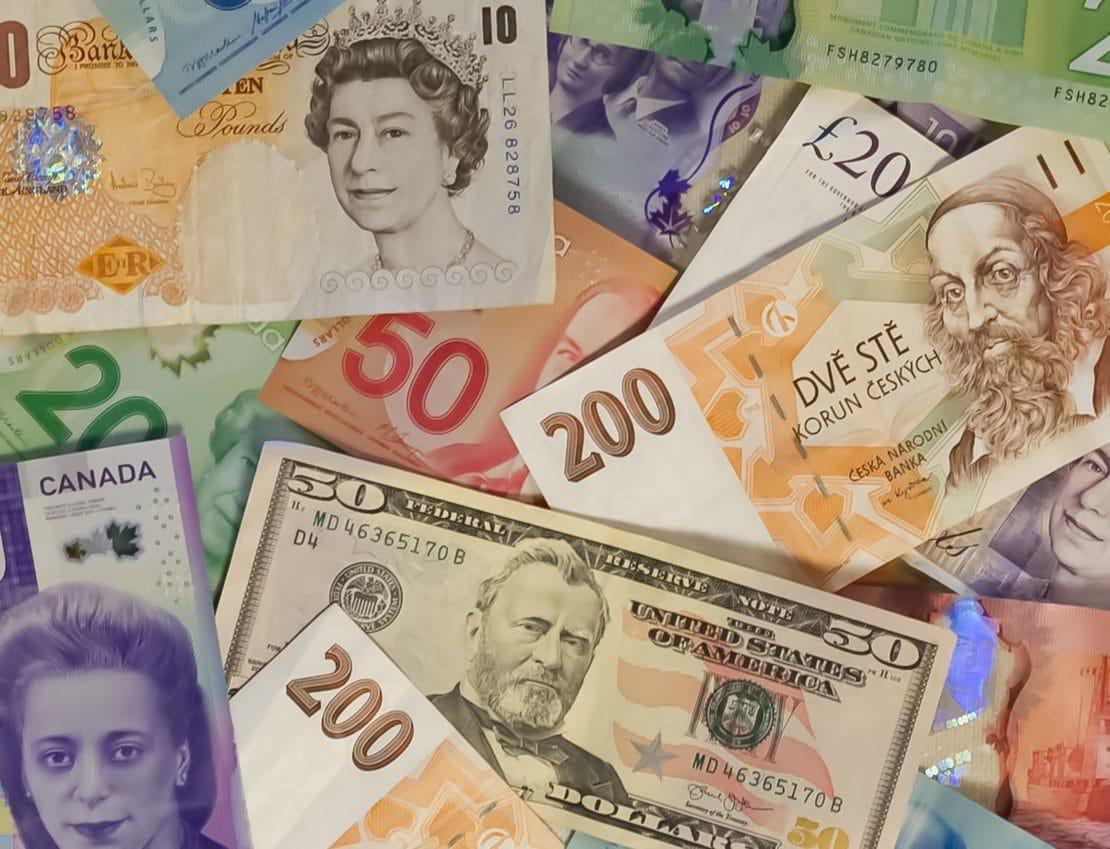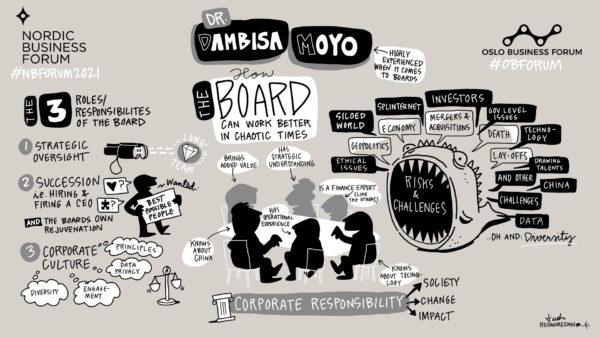26Jan2021
We have seen some great development within the field of the COVID-19 vaccinations and many countries have already started their vaccine rollouts. But is the situation truly as bright as many people, businesses, and probably governments alike believe?
For businesses and leaders, it is essential to understand the economic consequences the vaccinations have. This is exactly why on 25 January 2021, we turned to Ana Boata, the Head of Macroeconomic Research at Euler Hermes, and Helge Pedersen, Group Chief Economist at Nordea, for some expert insights on the economic situation going forward.
Nordic Business Forum: How do you see the COVID-19 vaccinations affecting the world economy? When?
Ana Boata: As it stands, it looks like it will get worse before it gets better. We are seeing a continued recession in Q1 2021 as COVID-19 restrictions are retightened across Europe as well as the US. Key downside risks could come from behind expectations of vaccination rollout notably for the H2 outlook. Vaccination hurdles on the demand (vaccination skepticism) as well as the supply side (production & distribution bottlenecks) are sizeable. Also, the slow start to the vaccination rollout in Europe is not promising.
However, achieving immunity of the vulnerable populations (20-40% of the total) to be completed by mid-2021 still remains achievable if governments make it their number one priority. This will be hard, but not impossible! Hence, we expect a technical-economic resurrection in Q2 2021 in time for Easter. More favorable seasonal effects (i.e. warmer temperatures) together with progress on the vaccination campaign will allow for a gradual loosening of restrictions, and in turn the unleashing of demand pent up over the winter months.
Vaccine economics is about confidence: restarting the service economy, consuming forced and precautionary savings, and resuming corporate investments. Financial markets have this scenario fully priced in: lofty valuations are providing very little cushion against unexpected bad news. If something goes wrong – such as virus mutation, inflation, social unrest, premature withdrawal of fiscal, or monetary support – they are in for a rough ride and substantial correction.
Helge Pedersen: I am convinced that the COVID-19 vaccines will play a key role in the development of the world economy. Already when the first vaccines were approved, there was a clear reaction in the financial markets, and the real economy is affected as the rollout takes off. This is a crucial precondition for the reopening of societies that are still affected by restrictions on the spread of infection. I expect a gradual reopening from the end of February in most European countries and with a little lag also the still affected parts of the US. No doubt that the first quarter of 2021 will be tough, but from then on I expect a strong recovery in the world economy.
NBF: How do the vaccinations affect businesses and their operations? When?
AB: We continue to expect the COVID-19 vaccinations to supercharge global growth in H2 2021. This is mostly thanks to positive confidence effects kicking in more substantially; particularly in countries where the vaccination campaign is on track to allow the immunity of people at risk by summer 2021. We are anticipating higher confidence effects and accelerating private consumption as we expect at least one-third of excess private savings to be unleashed. Therefore, companies will restart their investment plans, taking advantage of the prevailing huge amounts of liquidity and low financing costs.
HP: It gives companies greater certainty that normalization of everyday life is underway. Thus, they can once again start planning for the future. In other words, it affects both their budget planning but also decisions about business activity in general, say a decision to make new investments or an expansion at home or abroad.
NBF: What needs to happen for the world economy to eventually rebound?
AB: First, vaccinations are the best multiplier for investment and private consumption. As it stands, the vaccinations would allow for a full recovery by early 2022 with 2021 being the transition year towards the end of the sanitary crisis.
Second, policymakers will particularly be under scrutiny as they will continue to run the show again in 2021-2022. Knowing when and how to pull the plug will be essential. On the fiscal side, in Europe, safety net measures look set to be extended beyond mid-2021, albeit in a more targeted and cost-effective way. Fiscal stimulus packages are yet to be launched and the longer-than-expected sanitary crisis could delay further their implementation. Central banks will continue to act as buyers-of-last-resort to the public and the private sectors to ensure favorable refinancing rates, with the Fed and ECB maintaining record-low interest rates until at least H2 2023. The catalysts for economic and financial turbulence, and hence a delay in the recovery cycle, include unsuccessful fiscal pivoting, unnecessary regulatory and macroprudential pain points, and mismanagement of growing inside/outside divide. In the medium-run, a debt and liquidity overhang will create needed and heated debates, especially in countries with elections looming ahead.
Third, in the real economy, cyclical sectors (including energy, metals, automotive, and retail) are expected to see strong catch-up growth as soon as Q2 2021, as the recovery starts to unfold and economic uncertainty recedes. In this context, fiscal policy should support the recovery and avoid any cash-flow issues from higher working capital requirements. Meanwhile, COVID-19 sensitive sectors (including accommodation, food services, and transportation) will outperform markedly from H2 2021 onwards. Despite the favorable momentum, the scars from the 2020 hits on turnover and profitability will take time to heal. We expect the majority of sectors to return to pre-crisis levels of turnover and profitability only by early 2022.
HP: First and foremost, security for the future. It is not least crucial for the behavior of companies. In many countries, households have been reasonably secured during the crisis through support packages and the use of, for example, furloughs and other measures to keep unemployment as low as possible. Purchasing power is generally high among households in many countries, but it has not been possible to satisfy consumption due to shutdowns or travel recommendations. So, a private consumption avalanche could occur when the societies are being reopened for good.
NBF: Given the developments with the vaccinations, do you see a light at the end of the tunnel? Is optimism allowed yet or should we stay alert for now?
AB: For now, we are more in the basket of those cautiously optimistic. This is because we see that “light lockdowns” prevail across Europe, that uncertainty around the mutation remains high, and that the hurdles around the vaccination campaign are still unresolved. However, it is reasonable to expect the end of the sanitary crisis by early 2022 in most of the European countries as the vaccination campaign will become the number one priority, and that we expect a speed-up in the coming months. Again, it’s hard to catch-up with the delay, but not impossible. And this is the key to the recovery; how fast, well-managed, and therefore sustainable the reopening of the service economy will be in an environment where herd immunity is difficult to achieve by end-2021 in most of the European countries.
HP: I am absolutely optimistic about the future. There is light at the end of the tunnel and it is no further away than spring. There, I think the combination of vaccines and the fact that viruses go away on their own with the more summery weather will allow for an almost complete reopening of communities. And by the autumn, there will be sufficient herd immunity to prevent new shutdowns. There is, however, still a risk of a third wave in the pandemic and although public pockets are deep during the crisis, they are not bottomless. There is therefore an economic limit to how long an expansionary fiscal policy can keep economies free from a dramatic rise in unemployment and the number of bankruptcies in case of a third wave. But I certainly do not think we will come out and test the limit. I also believe that people’s behavior will relatively soon return to what it was before the COVID-19. However, I’m also of the impression that there will be structural changes from the pandemic. I would expect people to work more from home in the future, use e-commerce much more and that business trips will not return to the level from before the pandemic. All this can have a lasting impact on the need for office space, public transportation, physical retail stores, hotel capacity in the big cities, and flight capacity.

 by:
by: 
